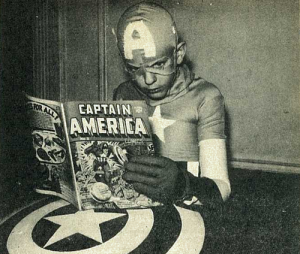 Superheroes are EVERYWHERE these days, and I do mean that. Captain America, Iron Man, Batman and Superman dominate the box office, The Flash runs across TV screens everywhere, Spider-Man and his web-slinging friends show up on school bags, T-shirts, notepads and lunch boxes (do kids even use lunchboxes these days? I’ve never actually seen one in my life), hell, images of Ms. Marvel were even used to awesomely deface anti-Muslim propaganda on buses. Literally no matter where you turn, you’re bound to run into a superhero sooner or later! These guys and gals are everywhere, our modern mythologies, the heroes that our children look up to and want to be like. It’s no secret that they came from comic books – I mean, the most popular subgenre in cinema right now is literally called “comic book movies”, but when’s the last time you’ve actually seen someone read a comic book? Like, just sit down on a bench in a park somewhere and read a comic book? Hell, when’s the last time you’ve seen someone actually talk about a comic book, outside of dedicated communities? When did you see one of the people you’re following on Twitter post something along the lines of “Holy crap, #TheVision is crazy! Best series this year, you should read it NOW!” That statement is completely true, but it also never happens – people just don’t talk about comic books the way they talk about comic book movies.
Superheroes are EVERYWHERE these days, and I do mean that. Captain America, Iron Man, Batman and Superman dominate the box office, The Flash runs across TV screens everywhere, Spider-Man and his web-slinging friends show up on school bags, T-shirts, notepads and lunch boxes (do kids even use lunchboxes these days? I’ve never actually seen one in my life), hell, images of Ms. Marvel were even used to awesomely deface anti-Muslim propaganda on buses. Literally no matter where you turn, you’re bound to run into a superhero sooner or later! These guys and gals are everywhere, our modern mythologies, the heroes that our children look up to and want to be like. It’s no secret that they came from comic books – I mean, the most popular subgenre in cinema right now is literally called “comic book movies”, but when’s the last time you’ve actually seen someone read a comic book? Like, just sit down on a bench in a park somewhere and read a comic book? Hell, when’s the last time you’ve seen someone actually talk about a comic book, outside of dedicated communities? When did you see one of the people you’re following on Twitter post something along the lines of “Holy crap, #TheVision is crazy! Best series this year, you should read it NOW!” That statement is completely true, but it also never happens – people just don’t talk about comic books the way they talk about comic book movies.
And I’m not pulling those facts out of my behind. Statistically speaking, people are just buying less and less comic books every single month. Wanna compare some numbers? Let’s look at last November’s comic book sales (which actually includes a lot of books released in December, because reasons), where the best selling Marvel comic book, the conclusion of “Civil War II”, sold 120,000 copies. That’s not bad, right? At $5, that’s over half a million in profits! Well, there’s a few things to consider here. This final issue of “Civil War II” is the conclusion of a major event (for reference, the conclusion of the previous “Civil War” sold over twice as much), and one sharing a name with one of the most profitable movies of the year. 120,000 copies is an incredibly low number for something that, under normal circumstances, should have easily sold between 250 and 300 thousand. To add insult to injury, the finale of this super special event that changed the Marvel universe forever was completely overshadowed by both issues of “Batman” released in the same period, which are completely ordinary and have no ties to any major events, outside of marginal connections to DC’s overall “Rebith” theme. The further you go back, the bigger the sales numbers rise. Even in the biggest depressions, people have bought a ton of comic books. Except today, despite the overwhelming presence of superheroes in our popular culture, their mecca lies abandoned.
Why is that, and more importantly, what does it mean for the future of comics? Well, to answer the first question, there’s a couple of reasons. One of them is that both companies (especially Marvel) have begun to rely on gimmicks and cheap hooks rather than on complex storytelling with compelling characters and interesting conflict. What if Captain America was evil? What if Iron Man was a black girl? What if Thor was a woman who had cancer? What if the original X-Men time-travelled to the present and stayed? These gimmicks sometimes provide devices for highly compelling stories (the aforementioned Vision solo series is basically built on the gimmick of “What if the Vision had a family?”, and it is amazing), but most of the time, they’re not enough to keep the reader’s interest. Why should I read about the evil Captain America when he’s doing nothing interesting? Why should I care about the black girl Iron Man when I know Tony Stark will be back in the role in time for the next Avengers movie? These gimmicks provide interesting and fun headlines, but more often than not they’re met with groans from the fans. Some of the best comic book runs of all time (Chris Claremont’s “X-Men”, Ed Brubaker’s “Captain America”, Matt Fraction’s “Hawkeye”, etc) didn’t rely on any gimmicks, they just gave us the characters in their natural habitat and let the stories develop on their own. When Jean Grey died in “X-Men”, we were invested in this because we knew this wasn’t just some kind of ploy to replace her with a young girl of color, it was actually a dramatic, earned moment. We had a reason to care, and to keep on reading. Now there’s no point in reading anything anymore – if you like an old character, you can bet that they’re going to be dying or turning evil sooner or later in order to be replaced, and if you like a new character, unless they’re immensely popular (like the aforementioned Kamala Khan), you’ll know in the back of your mind that they’re not here to stay. So why even bother getting invested in anything in the first place?
DC has been going on the right path here with their Rebirth initiative. They openly came out and said “We know what worked and what didn’t in our previous worlds, and we’re bringing the best of the best back and crafting stories that you want to read”. And trust me, it shows! Aside from the fact that not one, but TWO issues of Batman scored the #1 and #2 spots for sales in November, out of the top 25 top selling books for the month, only 8 were Marvel (and one was Star Wars) – everything else was either DC or third party, like Image’s “The Walking Dead”. Sure, DC still has a whole lot to work towards in order to rebuild that good will they lost since the launch of the New 52 back in 2011, but I believe they’re on the right path. As for Marvel… Well, that’s a bit more complicated. As of right now, Brian Michael Bendis, one of the worst writers currently working in comics, appears to be helming the direction the Marvel universe is taking, and that’s not a good sign at all. There will always be some hope, deep in my heart, that Marvel will change their ways and pull through, but if that doesn’t happen while DC continues to improve, expect me to jump ship and start supporting the company that truly deserves it with my money and attention. Hopefully that’s going to delay the inevitable doom of the comic book genre for at least a little while.


 And once again, the
And once again, the 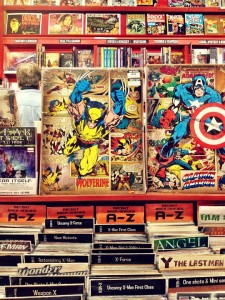 Thanks to the Marvel Cinematic Universe and DC’s extremely poor attempts at copying it, comic book properties have never been more successful! Ten years ago, nobody but hardcore comic book nerds knew Iron Man’s real name, or Harley Quinn’s origin, or even the simple fact that Thor is a Marvel superhero and not just a Norse god. Today, we’re all familiar with Tony Stark’s eccentric antics in and out of his suit, we all know about the abusive relationship between the artist formerly known as Dr. Harleen Quinzel and her puddin’, and many of us ponder what would happen if a baby tried to lift Mjolnir. But how many of us have actually sat down and read a comic book featuring any of those characters? Despite the fact that only his three solo movies – not counting all the other movies he’s appeared in or had starring roles in – made over $2.5 billion dollars at the box office, the latest issue of Iron Man’s solo comic book series that I could find any sales information about, “Invincible Iron Man #11”,
Thanks to the Marvel Cinematic Universe and DC’s extremely poor attempts at copying it, comic book properties have never been more successful! Ten years ago, nobody but hardcore comic book nerds knew Iron Man’s real name, or Harley Quinn’s origin, or even the simple fact that Thor is a Marvel superhero and not just a Norse god. Today, we’re all familiar with Tony Stark’s eccentric antics in and out of his suit, we all know about the abusive relationship between the artist formerly known as Dr. Harleen Quinzel and her puddin’, and many of us ponder what would happen if a baby tried to lift Mjolnir. But how many of us have actually sat down and read a comic book featuring any of those characters? Despite the fact that only his three solo movies – not counting all the other movies he’s appeared in or had starring roles in – made over $2.5 billion dollars at the box office, the latest issue of Iron Man’s solo comic book series that I could find any sales information about, “Invincible Iron Man #11”, 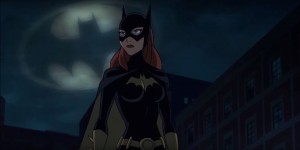 “The Killing Joke” is a classic Batman story written by one of comics’ most influential authors, the one and only Alan Moore (who has also penned “Watchmen” and “V for Vendetta”, among many, many more). It defined the Batman mythos for YEARS to come, giving the Joker a more-or-less definitive origin and transforming the failing-in-popularity Batgirl into the much more popular Oracle. The original graphic novel, albeit a bit on the short side, keeps being printed and reprinted to this day, with fans still debating over its ambiguous ending. Was the Joker right? Can one really bad day truly drive a person insane? Was that person Batman, who finally snapped and killed his arch-nemesis (echoing the sentiment he had expressed earlier in the story about their struggle ending by one of them killing the other), or did he listen to Gordon and bring him in by the book? Argh, I could go on and on about this story, but I don’t need to – countless others, from regular fans all the way to comic book writer Grant Morrison have thrown their own two cents into it. No, right now, I want to focus on a little something else.
“The Killing Joke” is a classic Batman story written by one of comics’ most influential authors, the one and only Alan Moore (who has also penned “Watchmen” and “V for Vendetta”, among many, many more). It defined the Batman mythos for YEARS to come, giving the Joker a more-or-less definitive origin and transforming the failing-in-popularity Batgirl into the much more popular Oracle. The original graphic novel, albeit a bit on the short side, keeps being printed and reprinted to this day, with fans still debating over its ambiguous ending. Was the Joker right? Can one really bad day truly drive a person insane? Was that person Batman, who finally snapped and killed his arch-nemesis (echoing the sentiment he had expressed earlier in the story about their struggle ending by one of them killing the other), or did he listen to Gordon and bring him in by the book? Argh, I could go on and on about this story, but I don’t need to – countless others, from regular fans all the way to comic book writer Grant Morrison have thrown their own two cents into it. No, right now, I want to focus on a little something else. 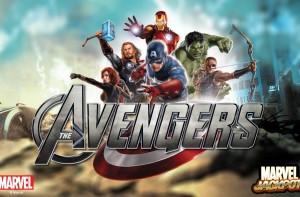 Okay, okay, fine, I know – I’ve spoken about the Avengers
Okay, okay, fine, I know – I’ve spoken about the Avengers  2016 was supposed to be the year of videogame adaptations. Finally, after years and years and years of failures dating all the way back to 1993 with the release of the utterly atrocious “Super Mario Bros.” movie, directors, producers and studios have attempted to bring beloved videogame properties to life on the big screen, with no luck. Even the best videogame movies, such as “Mortal Kombat”, are still only considered good by videogame movie standards and fail when measured up to literally anything else. This year, things were meant to change, damn it! We were going to have “Warcraft”, “Ratchet & Clank”, “Assassin’s Creed”, “Angry Birds”, and they were all going to be good! Well, okay, maybe not that last one, but things were looking up! As it turns out, no, they’re not – “Ratchet & Clank” was critically panned, proving once and for all that a fun game does not necessarily make a good movie, and according to early reviews
2016 was supposed to be the year of videogame adaptations. Finally, after years and years and years of failures dating all the way back to 1993 with the release of the utterly atrocious “Super Mario Bros.” movie, directors, producers and studios have attempted to bring beloved videogame properties to life on the big screen, with no luck. Even the best videogame movies, such as “Mortal Kombat”, are still only considered good by videogame movie standards and fail when measured up to literally anything else. This year, things were meant to change, damn it! We were going to have “Warcraft”, “Ratchet & Clank”, “Assassin’s Creed”, “Angry Birds”, and they were all going to be good! Well, okay, maybe not that last one, but things were looking up! As it turns out, no, they’re not – “Ratchet & Clank” was critically panned, proving once and for all that a fun game does not necessarily make a good movie, and according to early reviews 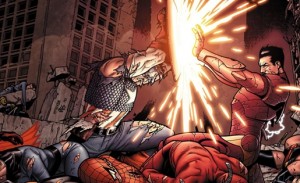 Marvel’s 2006 event comic event “Civil War” was one of the company’s biggest ones, scoping across the entire Marvel universe. Pretty much every single Marvel hero who was alive and on Earth at the time was involved in one way or another, whether in the main books or in their own spinoff series. At the time, “Civil War” received universal critical acclaim for completely shattering and reshaping the Marvel universe and presenting a fresh new perspective on the hero vs hero conflict (remember – up until that point, the classic formula of hero vs hero fights involved only fighting for a bit before teaming up against a bad guy, and there was no bad guy in sight during “Civil War”). While fan opinion on the story is more mixed these days (and with good reason – some of the content within is pretty questionable), the fact that its 2016 movie adaptation
Marvel’s 2006 event comic event “Civil War” was one of the company’s biggest ones, scoping across the entire Marvel universe. Pretty much every single Marvel hero who was alive and on Earth at the time was involved in one way or another, whether in the main books or in their own spinoff series. At the time, “Civil War” received universal critical acclaim for completely shattering and reshaping the Marvel universe and presenting a fresh new perspective on the hero vs hero conflict (remember – up until that point, the classic formula of hero vs hero fights involved only fighting for a bit before teaming up against a bad guy, and there was no bad guy in sight during “Civil War”). While fan opinion on the story is more mixed these days (and with good reason – some of the content within is pretty questionable), the fact that its 2016 movie adaptation 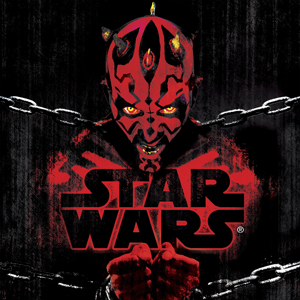 I’ve been reading “Star Wars” novels for a veeeeery long time. Admittedly, most were by Timothy Zahn, and admittedly, some were better than others, but at the end, all of them, the good and the bad, have done nothing but increase my love for the “Star Wars” universe. I read about the trials Luke Skywalker had to go through in order to rebuild his Jedi Academy, about his unlikely marriage to Mara Jade and about the attack of the Yuuzhan Vong. True, I also read some ridiculous stuff such as how the Emperor transferred his consciousness into a clone body and seduced Luke to the dark side or something (I don’t know, I generally try to keep the bad stories to the back of my mind), but hey, nothing good is good all the time. Even today, I continue reading “Star Wars” books with joy.
I’ve been reading “Star Wars” novels for a veeeeery long time. Admittedly, most were by Timothy Zahn, and admittedly, some were better than others, but at the end, all of them, the good and the bad, have done nothing but increase my love for the “Star Wars” universe. I read about the trials Luke Skywalker had to go through in order to rebuild his Jedi Academy, about his unlikely marriage to Mara Jade and about the attack of the Yuuzhan Vong. True, I also read some ridiculous stuff such as how the Emperor transferred his consciousness into a clone body and seduced Luke to the dark side or something (I don’t know, I generally try to keep the bad stories to the back of my mind), but hey, nothing good is good all the time. Even today, I continue reading “Star Wars” books with joy.